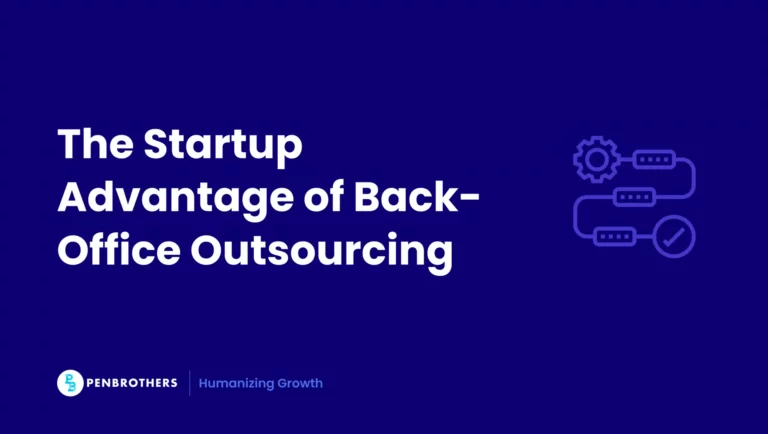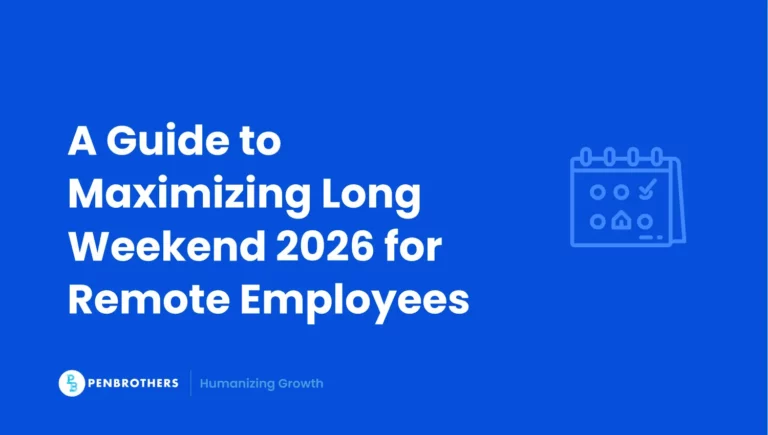A fast-growing Australian SaaS company, Propeller Aero, was faced with an urgent challenge. The company had secured additional investment and needed to rapidly scale its operations to meet growing demand. However, finding qualified geospatial specialists in Australia was becoming increasingly difficult due to high local hiring costs and a limited talent pool.
Despite offering competitive salaries, Propeller’s HR team struggled to fill crucial technical roles. As the company’s operations slowed down, the leadership team began exploring alternative solutions. That’s when they decided to look to the Philippines, a strategic move that quickly provided access to a highly skilled workforce at a fraction of the cost.
This isn’t an isolated story. Many companies are now turning to the Philippines, tapping into a wealth of talent that not only meets their technical requirements but also offers significant cost savings and operational flexibility.
Key Takeaways
- A Strategic Solution to the Global Talent Shortage: Hiring in the Philippines is a strategic response to the severe global talent shortage and rising local hiring costs. It provides companies with direct access to a large pool of skilled professionals, enabling them to fill critical roles and maintain growth momentum.
- A Unique Combination of Cost, Skill, and Cultural Alignment: The Philippines is a top choice for global companies due to a powerful combination of advantages. These include significant cost-effectiveness (often 60-70% savings), a large and diverse talent pool with strong technical and creative skills, exceptional English proficiency, and a deep cultural alignment with Western business practices.
- High Demand for a Wide Range of Specialized Roles: The talent being sourced from the Philippines is not limited to entry-level support. There is high demand for a variety of specialized roles, including full-stack web developers, customer success managers, accountants, and digital marketers.
- The Employer of Record (EOR) Model is the Smartest Way to Hire: For foreign companies, the most efficient and legally compliant way to hire Filipino talent is by working through an Employer of Record (EOR). The EOR handles all local labor laws, payroll, and HR administration, which eliminates the significant legal and administrative risks for the hiring company.
Why Do Companies Hire Filipinos?
Companies choose Filipino talent for three core reasons: exceptional English skills, cultural compatibility, and cost-effectiveness without quality compromise.
Filipino professionals integrate seamlessly into Western work environments due to decades of American influence in education and business practices. They understand Western communication styles, work ethics, and business etiquette naturally.
The technical capabilities are impressive. The Philippines produces over 100,000 IT graduates annually from universities that follow international standards. Many Filipino developers, marketers, and specialists have experience working directly with global companies through the country’s mature BPO industry.
Hiring Filipino talent also provides significant timezone advantages for US and Australian companies, enabling real-time collaboration during overlapping business hours.
Why Businesses Are Looking to Hire Talent from Overseas
Global companies are facing mounting challenges in hiring and retaining talent. The shift toward hiring across borders isn’t driven by a single factor—it’s a convergence of pressures reshaping workforce strategy worldwide. Here are the key reasons:
1. Global Talent Shortages
A Korn Ferry report projects a shortfall of 85 million skilled workers globally by 2030, potentially leading to $8.5 trillion in unrealized annual revenues if left unaddressed. Industries like tech, healthcare, and finance are among the hardest hit, as demand for skilled talent outpaces supply.
2. Employers Struggle to Find Skilled Workers
According to ManpowerGroup’s 2024 Talent Shortage Survey, 3 out of 4 employers worldwide report difficulty in finding the right talent. This impacts productivity, innovation, and the ability to scale. As roles become more specialized, companies must expand their talent search to previously untapped markets.
3. Rising Local Hiring Costs
In markets like the U.S., UK, and Australia, salary inflation remains high. For example, U.S. salary growth has remained elevated compared to historical averages, outpacing inflation and creating added strain on operating budgets. For SMEs especially, these costs can limit investment in growth areas such as R&D, marketing, and tech.
4. Intense Competition for Talent
Following “The Great Reshuffle,” large enterprises have been aggressively acquiring talent, leaving SMEs with fewer options. The cost of losing people adds up quickly—Gallup reports that U.S. businesses lose around $1 trillion annually due to voluntary employee turnover. This churn drains HR resources, breaks team cohesion, and slows business momentum—particularly for small and mid-sized companies trying to grow with leaner teams.
5. Job-Hopping Is Rampant Among Gen Z
Today’s younger workforce is more mobile than ever. According to a ResumeLab study, 83% of Gen Z workers consider themselves “job hoppers,” with many planning to stay with an employer for two years or less. This trend creates constant disruption for employers—leading to higher recruitment costs, lost productivity, and reduced institutional knowledge. Businesses are now looking toward more stable global hiring markets—like the Philippines—where longer tenure and higher employee engagement are more common.
Why the Philippines Is a Top Choice
The Philippines has garnered attention as a premier destination for outsourcing and talent acquisition. Several factors contribute to its appeal:
- Cost-effectiveness without compromising quality: The Philippines presents a rare combination of affordability and capability. Compared to hiring talent in Western countries like the U.S., Australia, or the UK, companies can reduce labor costs by as much as 60–70% without sacrificing quality. This is not simply about lower salaries—it’s about value for money. Filipino professionals bring strong technical knowledge, global experience, and high productivity to the table. This cost advantage allows businesses to reinvest savings into critical growth areas such as product development, R&D, or customer acquisition.
Check out our salary guide for more details on roles across the Philippines.
Can a US Company Hire Someone in the Philippines?
Yes, but US companies have two main options when hiring Filipino talent: direct employment or working through an Employer of Record (EOR).
Direct employment requires establishing a Philippine entity, understanding local labor laws, handling tax compliance, and managing payroll in pesos. This approach involves significant legal and administrative overhead.
The EOR model allows US companies to hire Filipino talent without establishing a local presence. The EOR handles employment contracts, payroll, benefits, and legal compliance while the US company manages the day-to-day work relationship.
Most US companies choose the EOR route for its simplicity and reduced risk, especially when hiring small to medium-sized teams.
Offshore Staffing Calculator
Discover the total cost of hiring with Penbrothers and compare it with the costs in your country.
[select2_js]
[salary_calculator_form_for_page]
- Strong English proficiency and cultural alignment: The Philippines is consistently ranked as one of the most English-proficient countries in Asia. According to the 2023 EF English Proficiency Index, the Philippines holds a “high proficiency” rating, making it an ideal destination for seamless verbal and written communication in global teams. But language is just one part of the equation. Filipinos’ deep cultural exposure to Western media, education systems, and workplace norms enables a natural alignment in communication style, work ethic, and business etiquette. This significantly reduces miscommunication, increases collaboration efficiency, and fosters a positive remote work culture—something that many companies struggle to achieve with offshore teams
- Large and diverse talent pool: With a population of over 110 million and producing hundreds of thousands of college graduates annually, the Philippines offers a diverse and ever-growing talent pipeline. From entry-level virtual assistants to senior software developers and digital marketers, the country has built a robust workforce ready for global industries. Key sectors such as IT and software development, BPO, e-commerce, accounting, and creative services are especially mature, thanks to decades of foreign investments in the outsourcing industry. This diversity means you don’t just get “support roles”—you get access to strategic thinkers, team leaders, and tech specialists ready to drive results across departments. If you’re unsure which roles can be offshored effectively, check out this guide on types of outsourced jobs you can fill in the Philippines.
- Excellent education and upskilling ecosystem: Education is a national priority in the Philippines. Prestigious institutions like the University of the Philippines, Ateneo de Manila University, and De La Salle University continuously supply the workforce with globally competitive graduates. Beyond formal education, the rise of tech bootcamps (e.g., KodeGo, Zuitt, StackTrek) and continuous learning platforms has fueled a culture of self-improvement and adaptability. Upskilling is also embedded into many BPO and tech organizations, with industry players investing in certifications for areas like digital marketing, UI/UX, coding, and project management. This ensures that Filipino talent isn’t just skilled at the time of hiring—but continues to grow with your business.
- Time zone compatibility: Unlike other offshore destinations where large time differences hinder collaboration, the Philippines offers practical time zone alignment for many major markets. Australian companies enjoy near full workday overlap, while those based in the U.S. West Coast have 4–6 hours of shared time—perfect for real-time communication without requiring overnight shifts. This alignment supports agile workflows, daily stand-ups, real-time client servicing, and overall smoother operations. It’s a key reason why more and more global firms are choosing the Philippines over traditional offshoring hotspots, especially for roles that require synchronous team dynamics or client-facing responsibilities.
Penbrother’s Success Story
How Propeller Aero Built a High-Impact Filipino Team and Saved 73% in Costs
One standout example is Propeller Aero, an Australian SaaS company specializing in drone mapping solutions for civil construction. Faced with rising hiring costs and a shortage of niche talent in their local market, they turned to the Philippines to find a sustainable way to scale.
Hiring locally was no longer viable. The high labor costs and limited availability of qualified geospatial specialists in Australia slowed down their operations. So they partnered with Penbrothers—not just to hire, but to build a long-term offshore team that could match the technical precision and pace required by the business.
In just 40 days, Penbrothers delivered a batch of highly qualified candidates, many of whom were graduates of top Philippine universities with relevant specializations. From software engineers to GIS and QA specialists, each hire filled a key operational gap.
The results were transformative:
- 73% cost savings per role, allowing Propeller to reallocate budget toward innovation and client services.
- Full HR, payroll, compliance, and onboarding handled by Penbrothers, minimizing legal and administrative risk.
- Responsive local support and talent engagement services, which helped keep retention and morale high.
And here’s how that connection to Filipino talent plays out on the ground:
How Much Should I Pay My Filipino VA?
Filipino virtual assistant rates vary significantly based on experience level and specialization. Entry-level VAs typically charge $3-5 per hour, while experienced specialists command $8-15 per hour.
Administrative VAs handling email, scheduling, and data entry usually fall in the $3-6 range. Technical VAs with skills in web development, digital marketing, or graphic design charge $6-12 per hour. Senior VAs managing complex projects or leading teams can command $10-15 per hour.
Full-time monthly arrangements often provide better value than hourly rates. A dedicated VA working 40 hours weekly might cost $500-1,200 monthly, depending on their skill level and responsibilities.
The global talent shortage is a reality that businesses can’t afford to ignore. Forward-thinking companies are already tapping into the Philippines’ rich talent pool to build agile, cost-efficient, and high-performing teams. Waiting too long could mean missing out on top talent that’s ready to make a global impact.
Penbrothers is your partner in building the right team, fast. With deep expertise in offshore staffing, HR compliance, and Filipino talent acquisition, we help businesses like yours scale with confidence and precision.
Ready to build your remote team in the Philippines? Let’s talk →
Frequently Asked Questions
The main reasons are to combat the global talent shortage and to reduce high operational costs. The Philippines offers a unique combination of cost-effectiveness (with 60-70% savings), a large pool of skilled and educated talent, high English proficiency, and strong cultural alignment with Western businesses.
It can be very complex to do directly, as this would require setting up a local legal entity and navigating all of the local labor and tax laws. The far simpler and more common solution is to partner with an Employer of Record (EOR), which legally employs the staff in the Philippines on your behalf and handles all the local compliance.
While the country is a global leader in customer support, companies are now hiring for a wide range of specialized and technical roles. This includes software developers, IT specialists, accountants, digital marketers, graphic designers, and virtual assistants.
The Philippine time zone offers significant flexibility. It allows for a near full workday overlap with Australia and 4-6 hours of shared working time with the US West Coast, which is ideal for real-time collaboration. It also enables companies to create 24/7 “follow-the-sun” operations, where the Filipino team can continue working while the US or European teams are offline.
The rates vary based on experience and the complexity of the tasks. An entry-level administrative VA may charge $3-5 per hour, while a more experienced or specialized VA (e.g., with technical or marketing skills) can command $8-15 per hour.






